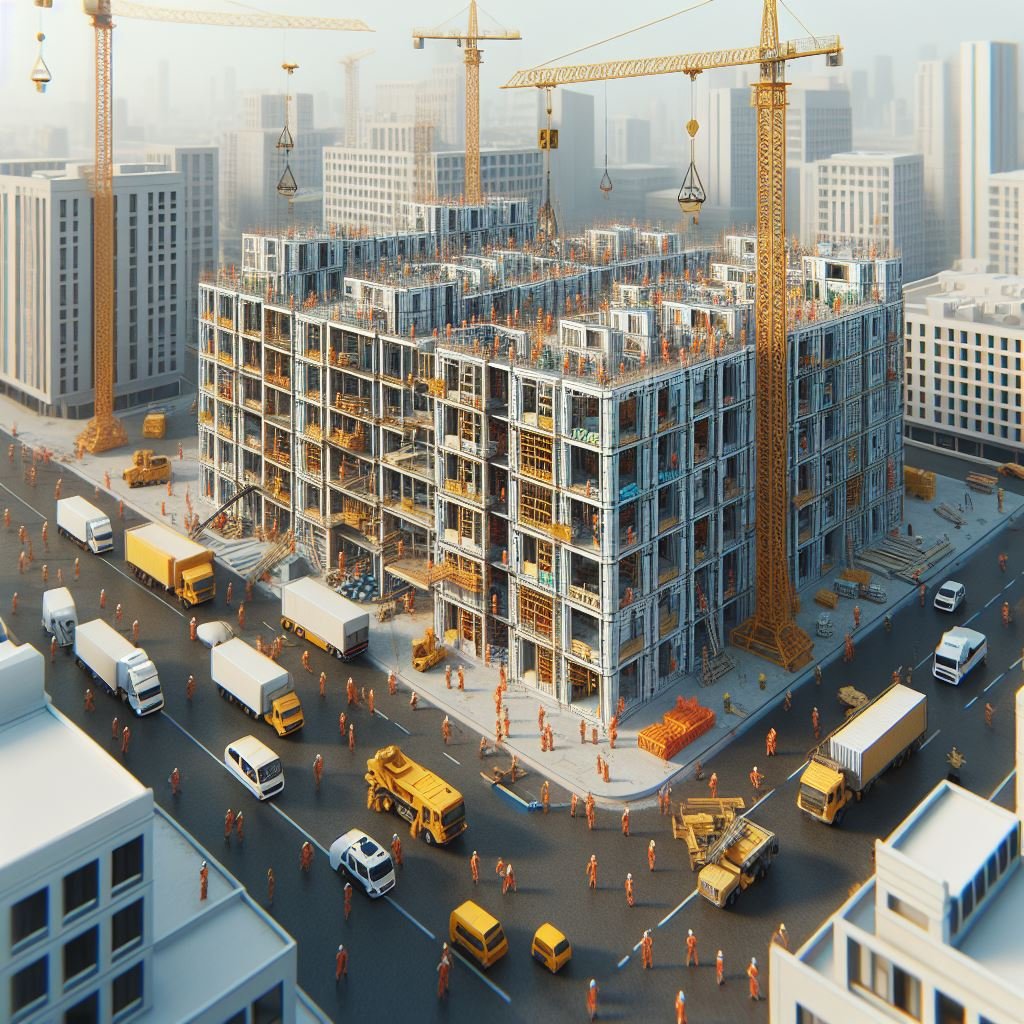Machine Learning Doesn’t Dehumanise Construction…It just makes it better
Bill Gates and Paul Allen knew exactly what they were doing in 1974: way ahead of their curve, they realised global computing companies, and IBM in particular (Big Blue), was increasingly obsessed with Hardware. Because Bill and Paul had learned from their pre-college work on the Traf-O-Data project (analysing flow data at traffic lights), that software was way, way…way more important than in cabinets stuffed with valves and the odd microchip. And by 1975, Microsoft was born, going on (rapidly) to spectacularly launch BASIC on a largely unsuspecting world…and the rest, as they say, is history.
We know all this already, of course, we do, but still, it’s worth pausing on the lessons to be drawn from that crucial dynamic between Hardware and software: we need Hardware to do stuff and make things, but it’s the software that makes it work better, do new things, and produce new “stuff”, much more efficiently. That’s the fundamental principle that turned Microsoft into one of the biggest corporations on the planet, and, more importantly, it also changed our world forever. The critical difference between “how we do things” and “how we do things better” has reshaped how we’re all likely to live in the future…nothing short of a new debate for our increasingly troubled times.
Construction Markets
So let’s pause for a moment and think about how we’re currently applying that principle in practice, and let’s do it by putting Construction Markets under the Bell Jar.
When it comes to the nuts and bolts of construction, it’s relatively easy to answer the question of “how we do things”: we do them with physical assets, like hammers and nails, bricks and concrete, and teams of shuffling builders…and that’s pretty much how we’ve been doing it for the last thousand years. But “how we do things better”…well, that’s a much more contemporary matter. Now we’re talking about Machine Learning and AI…the “soft stuff” that Bill Gates and Paul Allen so decisively caught onto nearly fifty years ago.
But it certainly doesn’t mean technology taking over on site: there’s no prospect soon of running across a robot hammering away with a mouthful of nails. What it does mean, though, is a technology with a human touch: which means, in turn, improved working conditions for all those teams of shuffling builders, and better outcomes, in a world so desperately in need of enhanced delivery standards capable of improving the daily lives of our fellow citizens. Building things better has now become an essential prerequisite for the 1.4 Billion people across the globe who are currently homeless or in dire housing need.
Machine Learning doesn’t take humanity out of the construction process…it just makes the process more human…and better.
ConstruchTech
Modern ConstruchTech improves site safety, increases productivity, and radically reduces bottom-line costs, enabling a much more streamlined production process. And that means more homes for those in need…and a lot more besides.
Machine Learning achieves all this because it can (literally) learn and predict functional outcomes on its own, making use of complex algorithms to analyse data efficiently and produce better design and delivery systems, as well as testing environmental impact conditions before the first turf is even turned (through situational modelling). It can also assess and reduce operational risks, using innovative tools like Construction IQ and Pype (https://pype.io), each of which priorities resources down the track to minimise workflow bottlenecks and ensure optimal project management standards.
So, as we read this week that Geoffrey Hinton, often hailed as “the Godfather of AI”, has stepped down from his job at Google, you can’t help but think he could do a lot worse than search the construction classifieds for a new job: at least he would be more gainfully employed than he was at Google.
Executive Overview
Machine Learning doesn’t mean machine-driven: in many ways, emerging technologies free up people-based talent to achieve more than they could ever.

%20(1)%20(1).jpg)


%20(1)-1.jpg?width=150&height=150&name=AdobeStock_521779778%20(1)%20(1)-1.jpg)
.jpg?width=150&height=150&name=shutterstock_677901256%20(1).jpg)


.jpg)
Leave a Reply